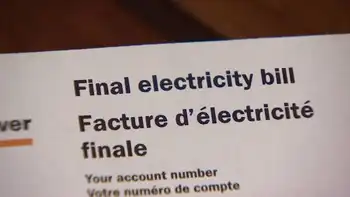Concerns over PG&E rate hurting solar market
ALAMO, CALIFORNIA - Bill Schrader uses a lot of electricity at his 5,200squarefeet house in Alamo, particularly when the air conditioning runs during the sweltering summer months.
But after installing solar panels in January, his electric bill plunged from $450 per month on average to $45.
The drop was especially steep because the Schraders were among the 17 percent of PG&E customers statewide who paid the highest prices for electricity in the utilitys current fivetiered rate system designed to reward conservation and punish big energy users with high bills.
Those rates have been an enormous boon to Californias burgeoning residential solar industry, which often markets solar as a way for households that use a lot of power to save money on electric bills. But now PG&E has proposed a new rate plan that many fear could both discourage energy conservation and stall Californias solar market.
The proposed rate structure would replace the current five tiers with three. It would increase the electric bills of most PG&E customers but dramatically reduce bills for those who use the most electricity. Customers currently in Tier 5 would go from paying nearly 50 cents per kilowatthour to 30 cents per kilowatthour — a move that would radically change the economics of solar for many homeowners.
It feels like this is PG&Es way to thwart the solar industry, Schrader said. If the rate changes go through, the savings I am experiencing now and those projected into the future would decline substantially.
Silicon Valley solar executives are just beginning to dig into the proposed rates and what they could mean for the industry. Customers who use 1,500 kilowatthours per month would see their average bills drop by $108.62, from $480.08 to $371.46. But customers who use 550 kWh per month would see a $10.73 increase in their average monthly bill, from $77.40 to $88.13.
PG&E has asked state regulators to rule on the proposed rate changes by the end of the year. If approved, they would go into effect in May 2011.
Im very concerned about it, said David Hochschild, vice president for external relations at Solaria, a solar manufacturer in Fremont. I dont think this was done with any consideration of how it will impact solar in California. California has sent a strong signal to the market that we want to promote solar. But if you implement rates that discourage solar, it undermines all of the hard policy work that has already happened. You cant have one foot on the gas and one foot on the brake at the same time.
Other solar advocates stress that whats on the table is a proposal that is likely to change.
Im not prepared to say this is some kind of death knell, said Adam Browning, executive director of the nonprofit Vote Solar Initiative. While it lowers the top tier, it also expands the middle tier, and could possibly bring more people into a sweet spot for solar. This is PG&Es proposal, and now people can weigh in. What we dont want is for people to freeze in their tracks.
The solar industry currently enjoys several incentives, from a 30 percent federal tax credit to a state rebate. But its no secret that one of the biggest drivers of solar has been the tiered electricity rates, along with the perception that they are likely to rise every year. Thats one reason why the residential solar market has taken off in warmer inland cities such as Bakersfield, Chico, Clovis and Fresno.
If you live in a sunny place and are in the fifth tier, thats when solar makes the most sense, said Severin Borenstein, director of the Berkeleybased University of California Energy Institute. But you are betting that PG&E is going to maintain these steep prices. If we go back to flatter price schedules, the economics go down the toilet.
PG&E says it is simply responding to widespread complaints that rates for consumers who use the most energy are far too high.
This is about making our rate structure more simple and more equitable for our customers, said David Eisenhauer of PG&E. We understand the concerns of the solar industry, but 40 percent of the residential solar in the United States is in PG&E territory, and we support several solar programs.
Others warn that PG&Es plan to lower electric rates for highend users has negative consequences for AB32, the state law requiring California to reduce its greenhouse gas emissions. They worry that if consumers no longer have a strong incentive to conserve energy, electricity consumption will rise, leading to more peak demand, more greenhouse gases and increased air pollution.
Related News

Brand New Renewable Technology Harnesses Electricity From The Cold, Dark Night
LOS ANGELES - Two years ago, one freezing December night on a California rooftop, a tiny light shone weakly with a little help from the freezing night air. It wasn't a very bright glow. But it was enough to demonstrate the possibility of generating renewable power after the Sun goes down.
Working with Stanford University engineers Wei Li and Shanhui Fan, University of California Los Angeles materials scientist Aaswath Raman put together a device that produces a voltage by channelling the day's residual warmth into cooling air.
"Our work highlights the many remaining opportunities for energy by taking advantage of the cold…




